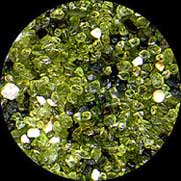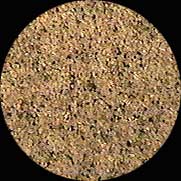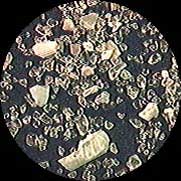|

July 12, 2008

Our summer issue, that is. Toss it in your carry-on or beach bag if you share my take on summer vacation: no time to stop thinking (what fun would that be?), but a time for thinking about different things. Perennial favorite things. Comfortingly timeless things—baseball, beaches, bandanna-wearing Frisbee-catching dogs—that nonetheless reveal new vistas when viewed from new perspectives. Working on this issue made me see those chestnuts of summer as if for the first time.
In his Biomechanics column, “Battered Expectations,” Adam Summers demystifies a couple of baseball’s witchy pitches—the rising fastball and drop curveball—but in the process, deepens the mysteries of perception and performance. It turns out that a major-league hardball’s apparent defiance of the laws of physics is, like a convincing magic trick, in the eye and brain of the beholder (the batter), beguiled by the 90-mile-an-hour craft of the performer (the pitcher). Diehard baseball fans are notoriously obsessive, delighting in the collection and ritual recitation of arcane records and statistics; for the baseball fan who is also a science geek, the physics and neurophysiology of baseball open up a whole new field of dreams.
Here are a few of the bottomless treasure troves I came across:
- Alan Nathan’s The Physics of Baseball. Nathan, a professor of physics at the University of Illinois at Urbana-Champaign and a shameless Red Sox fan, maintains a lovingly updated page, packed with juicy links to his own and others’ writings, video lectures, and pro demos on such topics as “The Effect of Spin on the Flight of a Baseball,” “Dynamics of the Baseball-Bat Collision,” and “The Mechanics of a Breaking Pitch.” The vexing questions of wood vs. aluminum bats and of the quantitative impact of steroid use on baseball performance are pondered in depth. (Bonus: a wormhole to the equally teeming universe of tennis science.)
- The Magnus Effect and Bernoulli’s Principle. A concise explanation (with an equation, no less) of how seams and spin actually cause a baseball to curve in flight. That is not an optical illusion.
- A. Terry Bahill’s Science of Baseball Research. Adam Summers’ article is primarily based on the work of Bahill, a University of Arizona systems engineer and his chief collaborator, former pro relief pitcher and polymath Dave Baldwin. Here’s one of their landmark popular articles, and here’s one of their scholarly ones [pdf], which nonetheless is salted with baseball lore:
The rising fastball is often referred to as “smoke,” “cheese,” or “express” . . . A breaking pitch will be defined as any pitch that seems to exhibit an abrupt drop near the plate. Batters describe these pitches with phrases such as, “the bottom dropped out of it” or “it fell off the table.” [Tony] Gwynn uses the metaphor, “a dead fish.” He writes that hitting a sinker is “like hitting a rock—it won’t go anywhere” . . .
- A heated discussion at Physics Forum shows that the dream of an actual antigravity fastball dies hard, even among those who should know better.
There’s sand in your magazine too, and not just from reading it on the beach. Gary Greenberg, who wrote our Endpaper “Fine Grain,” turns out to be the tip of a sandberg—a whole world of people who collect, magnify, and study sand. Those who do this for a hobby are called psammophiles, and those who do it as a subdiscipline of geology are psammologists. As fascinating and evocative as beach sand is macroscopically—a softness made from hardness, like living flesh to walk and lie on, the pliant medium of drip castles and more elaborate sculptures—looked at under a microscope it’s like a jewel cask, or a boneyard of tiny skeletons. And as different as various beach sands are to the touch and the naked eye – from Hawaii’s coarse black lava sand to the fine white quartz and shell sands of Florida’s Gulf Coast, which feels like cool flour—the microscopic differences are even more dramatic and telling.
- The International Sand Collectors Society’s motto is “Discovering the World, Grain By Grain.”
Samples from personal vacations are usually the reason why people become sand collectors in the first place. Peering at a sample from a trip long ago has the unique ability to keep those memories alive long after your adventure has passed.
They have a “Sand Discovery Kit” for you if you’d like to get started.
- The Virtual Sand Collection allows you to examine sand samples from all over the world at a wide range of magnifications.
- The collection is part of The Sand Web Site, a user-friendly tutorial from the Pasadena City College geology department on how various sands were formed and how you can collect and examine them.
- Hawaii is a sand maven’s mecca, with beaches of white, black, and even red and green sand. Sands from Hawaii features excellent macroscopic and microscopic comparisons.
- This promotional video for Gary Greenberg’s book, while more commercial than scientific, includes some amazing close-ups.

From the Sand Web Site

(Move mouse over various magnifications to change views.) |

Low
Med
High

Green Sand Beach, Hawaii
Volcanic sand (olivine) |

Low
Med
High
V High

San Clemente, California
Granitic sand (quartz, feldspar, and biotite) |

Low
Med
High
V High

Tarpon Springs, Florida
Fine quartz and shell fragments |
 |
As for the dogs of summer, the new vistas on canine evolution opened up by this month’s feature story call for a post of their own. Stay tuned.


(Annie Gottlieb) |
Comments (add yours!)

Return to July-August home
|




